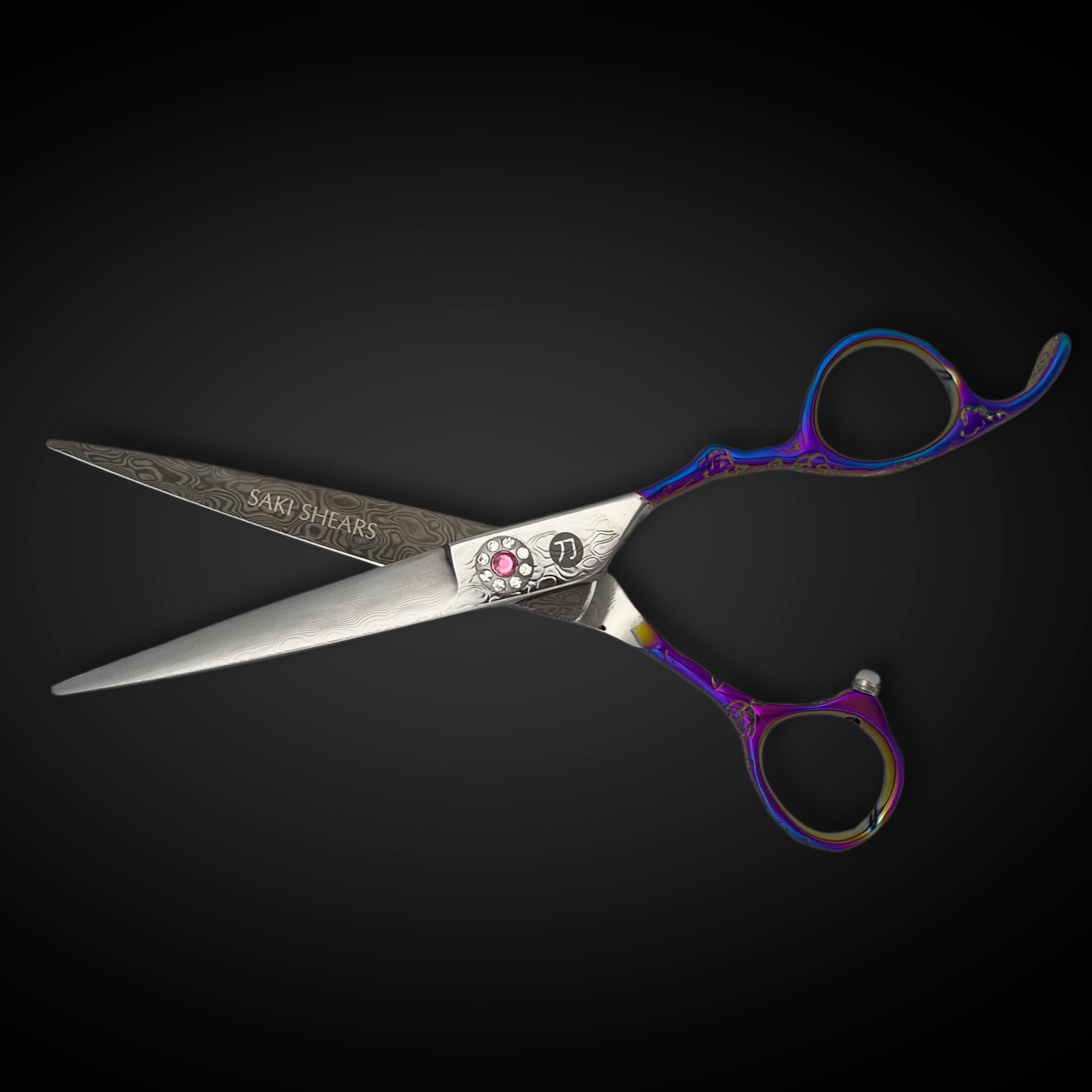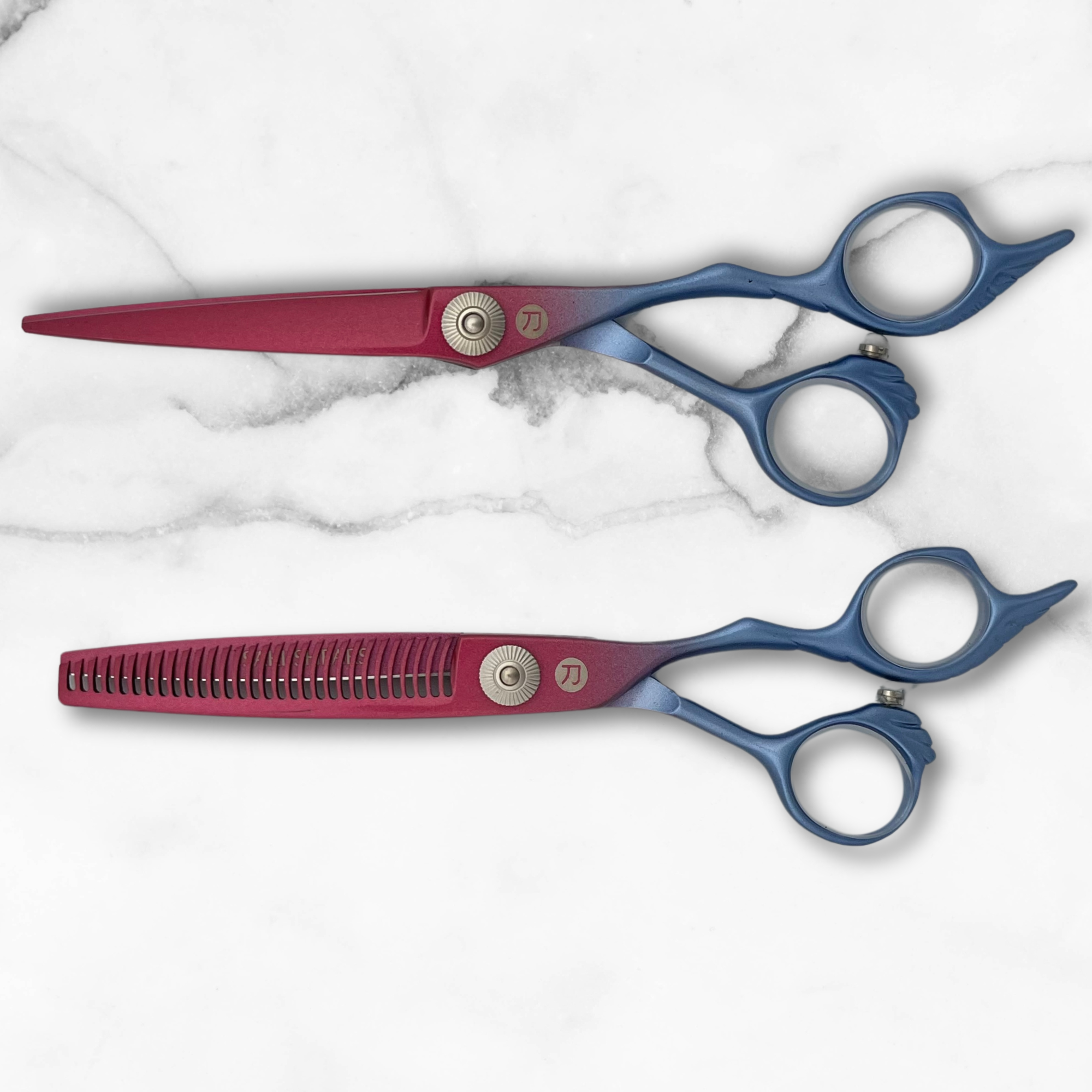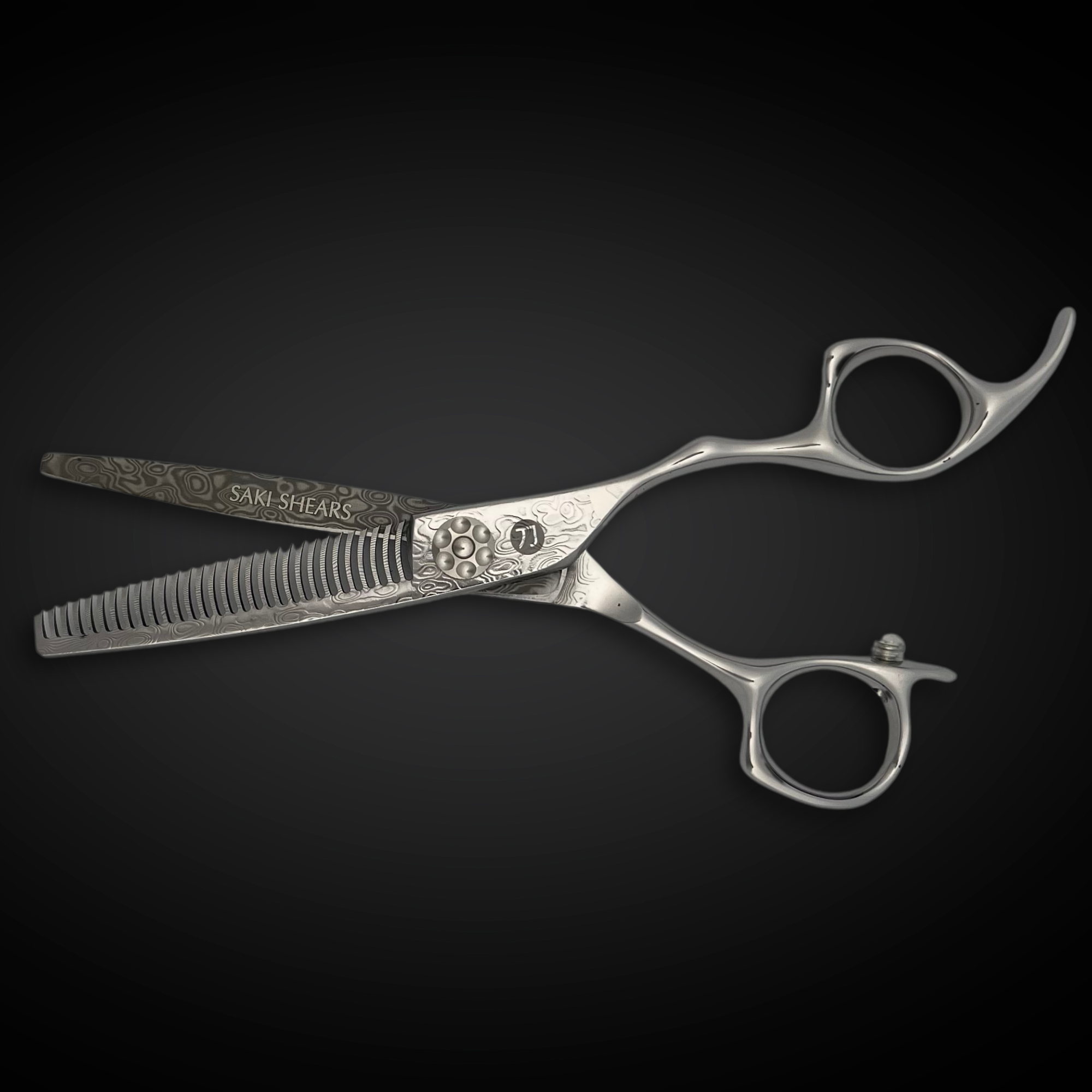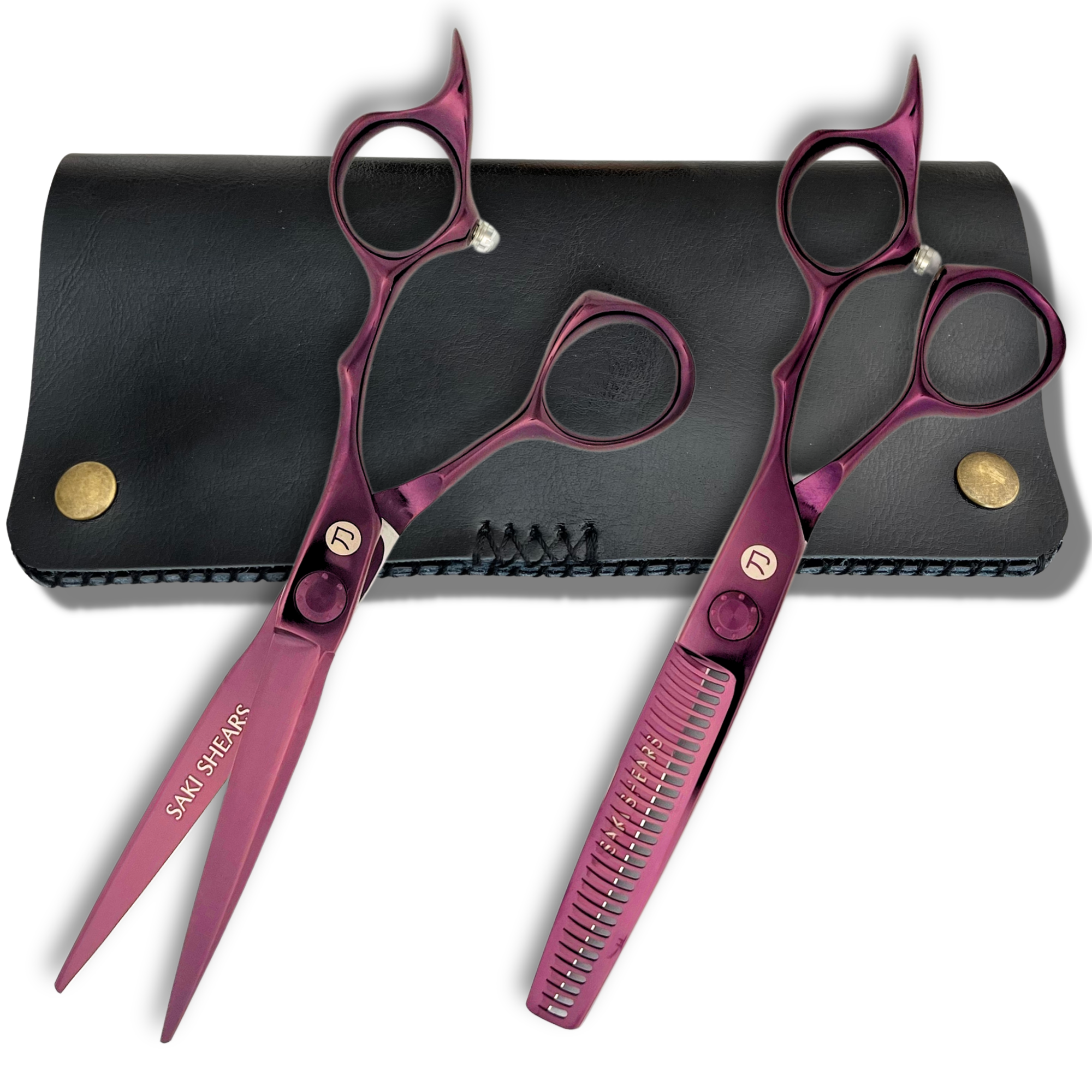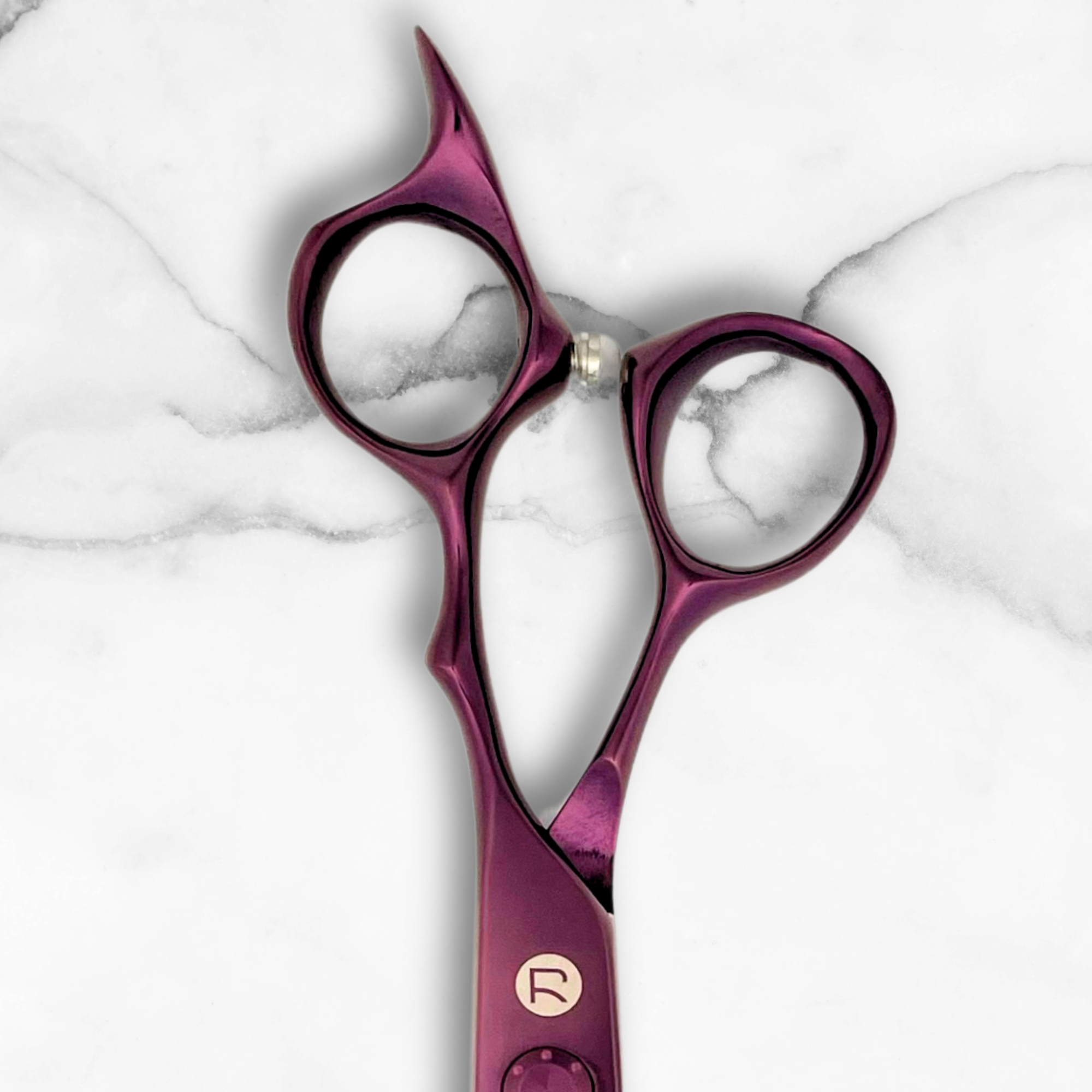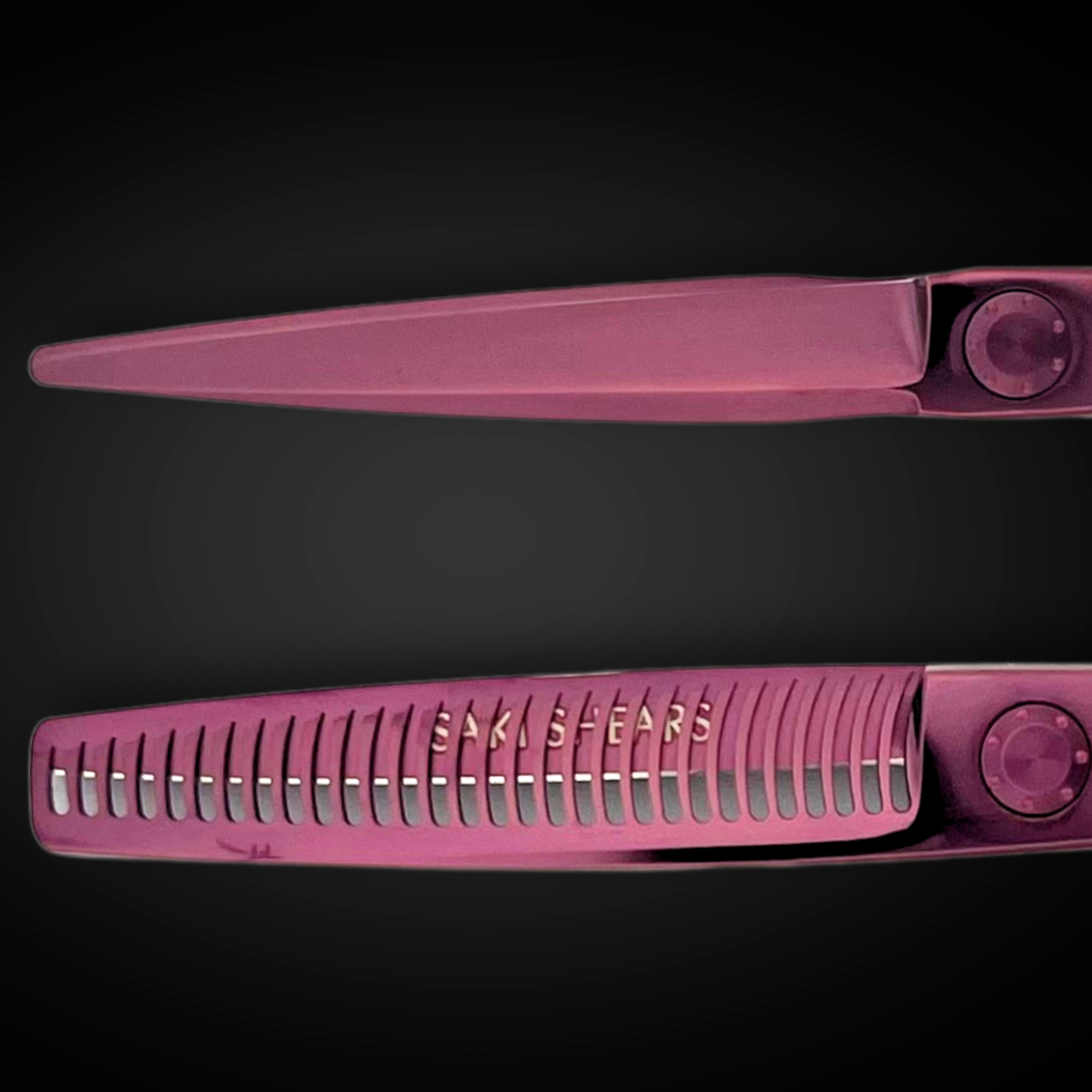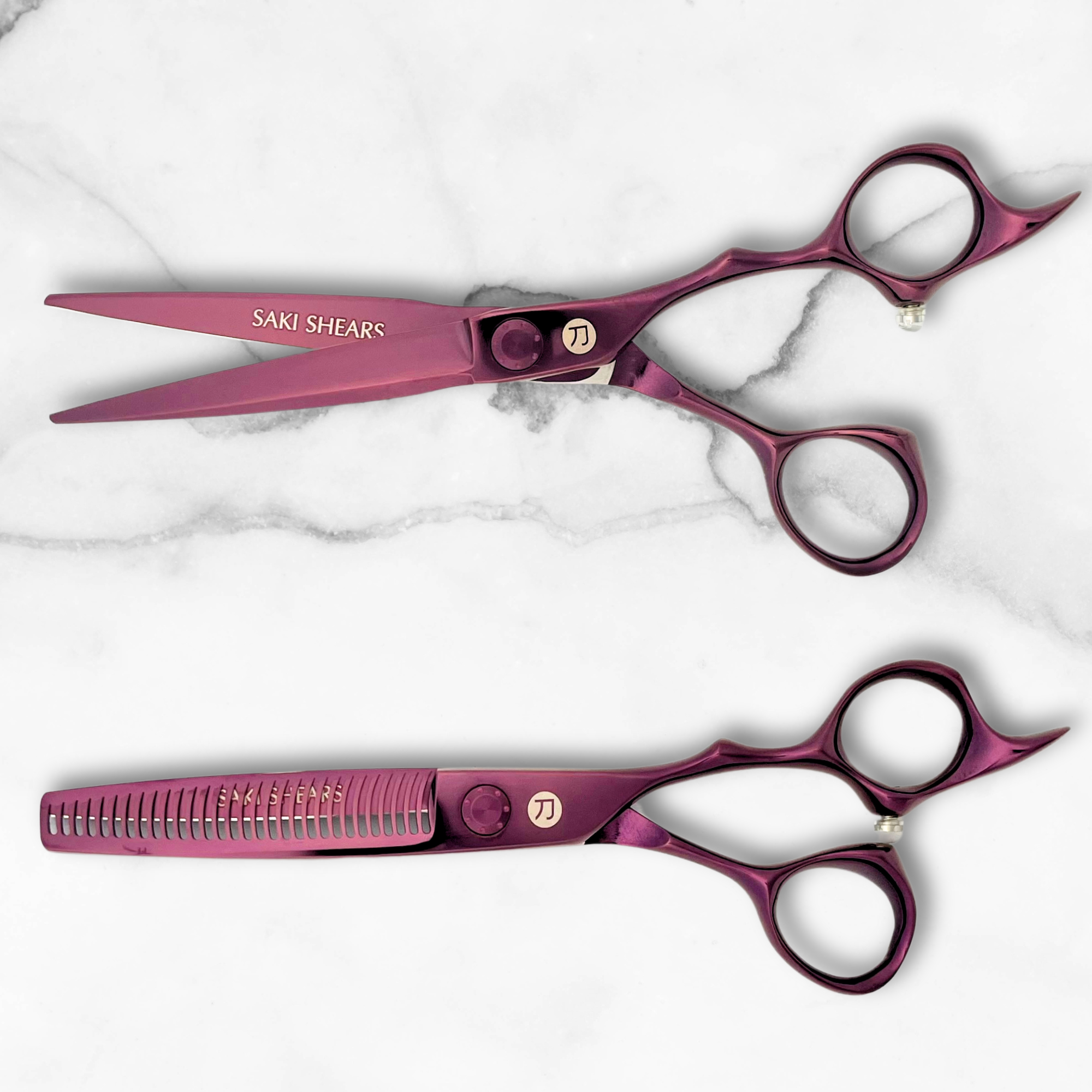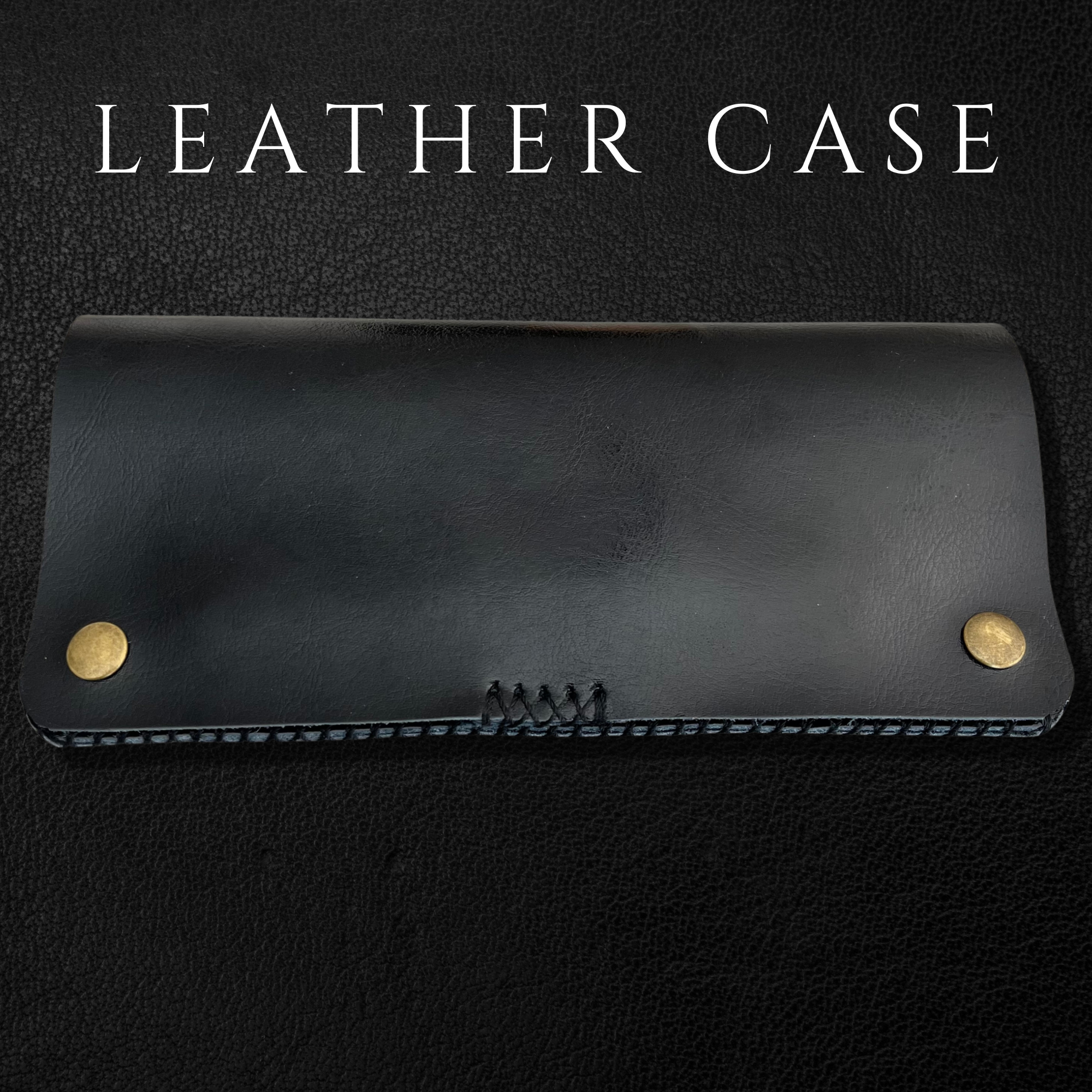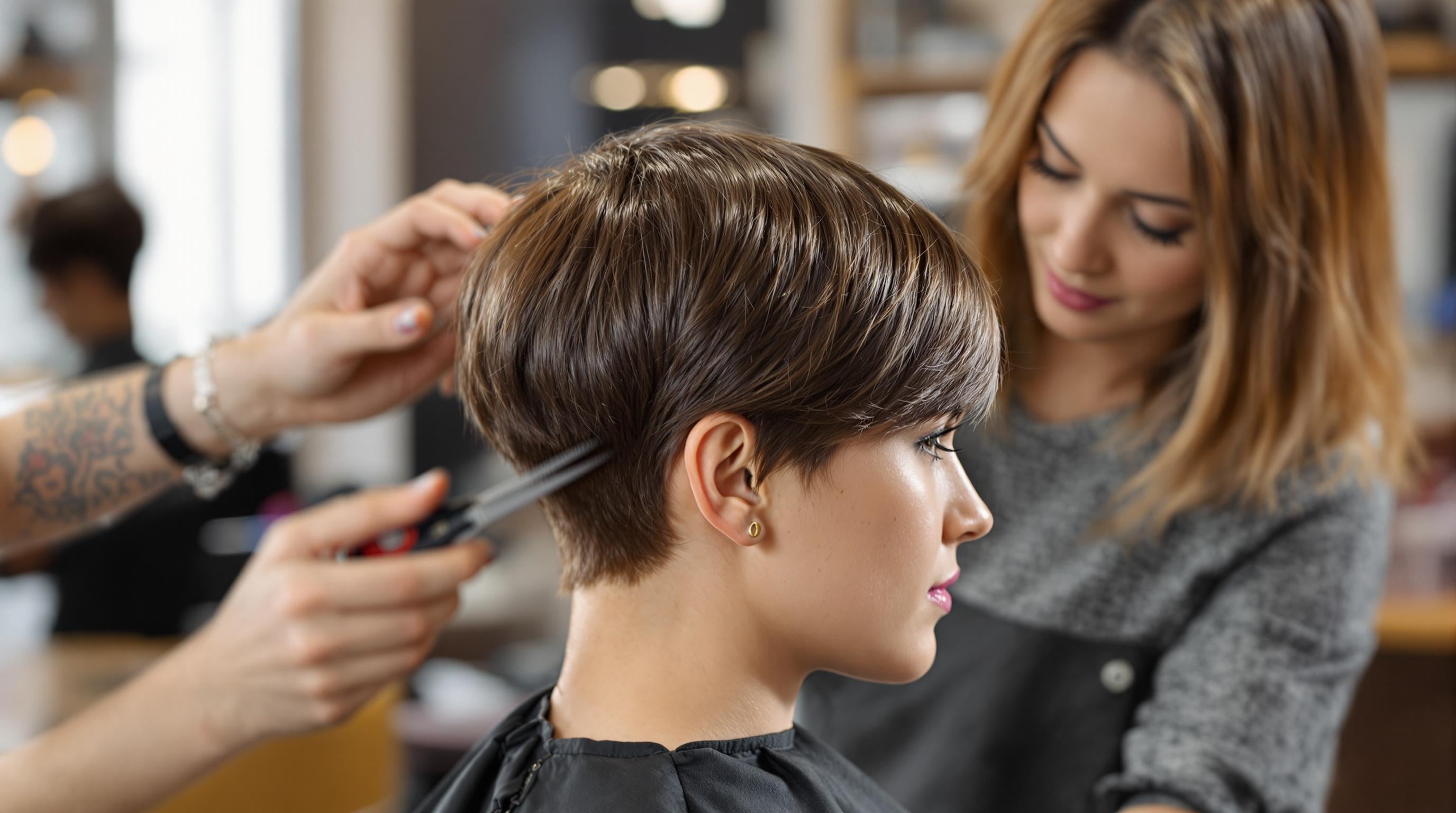Creating Soft Curtain Bangs: Professional Cutting Techniques Using Saki Shears
Want perfect soft curtain bangs? Here's how: Use sharp, ergonomic tools like Saki Shears for precise, clean cuts. Start with damp, sectioned hair, and apply techniques like point-cutting for soft layers. Style with a round brush and blow dryer for that signature face-framing look. Avoid common mistakes like cutting too short or over-thinning, and maintain your tools for consistent results. Follow these steps to master this trendy hairstyle.
How To Cut Curtain Bangs - Professional Technique
Tools Needed for Cutting Curtain Bangs
Using the right tools is key to achieving the soft, face-framing layers that define curtain bangs. Quality equipment helps stylists work with precision and control, ensuring clients get the look they want.
Why Saki Shears Are Ideal for Curtain Bangs

Saki Shears, made from high-grade Japanese stainless steel, are known for their sharpness, durability, and ease of use. Their blades allow for clean, precise cuts, perfect for creating soft, natural-looking curtain bangs. The ergonomic design minimizes hand strain during detailed work, while the adjustable tension system offers better control for layering and texturing [1].
Other Must-Have Tools for Styling and Texturing
In addition to Saki Shears, there are several other tools that help in achieving and maintaining flawless curtain bangs:
Thinning Shears: Great for reducing bulk and adding texture [2].
Styling Essentials:
- A salon-quality round brush to add volume
- A blow dryer with a concentrator nozzle for precise styling
- Sectioning clips to keep hair organized
- A fine-toothed comb for detailed cutting
Maintenance Tools: Regular cleaning and proper storage are crucial for keeping Saki Shears and other tools in top condition.
Preparing Hair for Cutting
Getting the hair ready is key to achieving precise curtain bangs. A good setup helps maintain control and accuracy, especially when using Saki Shears, known for their sharp blades. Damp hair works best, allowing for clean and controlled cuts during preparation.
Sectioning the Hair
Start by parting the hair down the middle. Create a triangular section at the front, with the widest part at the hairline, tapering back about 2-3 inches. Use a fine-toothed comb to keep the partings neat, and clip the rest of the hair out of the way to avoid distractions. Make sure the sections follow the natural growth pattern of the hair for the best results.
Why Damp Hair Works Best
Damp hair is easier to control and cut evenly, making it ideal for styling curtain bangs. However, keep in mind that hair shrinks when it dries, so leave some extra length to avoid cutting the bangs too short.
Here’s how to prepare damp hair:
- Use a spray bottle to lightly mist the hair until it's damp (not soaking wet). Reapply as needed during the process.
- Comb through the section to evenly distribute moisture.
- Smooth out the hair to remove any kinks or tangles for an even cut.
Adjust the level of dampness based on hair type: fine hair should be just slightly damp, thicker hair needs more moisture for better control, and curly hair may require extra water to account for shrinkage.
With the hair sectioned and dampened correctly, you’re ready to create soft, face-framing layers with precision.
Techniques for Cutting Soft Curtain Bangs
Getting soft curtain bangs just right takes the right tools and careful technique. With dampened, sectioned hair, you're set to begin the cutting process using Saki Shears.
Point-Cutting Technique
Hold your Saki Shears at a 45-degree angle and make small, vertical cuts with the tips. Start at the center and work outward in small sections to keep everything even. The ergonomic design of Saki Shears makes these gradual, precise cuts easy to control.
Here are some tips for point-cutting success:
- Keep each section of hair at the same angle.
- Focus on small, precise cuts instead of removing large chunks.
- Take your time to maintain control and avoid cutting off too much.
After shaping the bangs with point-cutting, you can use thinning shears to refine the texture and create a softer, more natural finish.
Using Thinning Shears for Texture
Thinning shears are perfect for blending layers and enhancing the softness achieved through point-cutting. Saki thinning shears, crafted from high-quality Japanese steel, deliver clean cuts that blend layers smoothly without harming the hair.
Here’s how to adjust texturizing based on hair type:
- Fine Hair: Add light texture at the ends only.
- Medium Hair: Focus on mid-lengths to ends for balance.
- Thick Hair: Add texture throughout, but avoid the roots.
Adjusting for Different Hair Types
Each hair type requires a slightly different approach to create flattering curtain bangs.
- Straight Hair: Cut slightly longer than the desired length since precision cuts are more noticeable on straight hair. Use minimal texturizing to keep movement while avoiding a stringy look.
- Wavy or Curly Hair: Cut longer to account for natural lift, shrinkage, and movement. Use point-cutting to enhance the hair's natural texture.
Whatever the hair type, Saki Shears provide the precision needed for a clean, damage-free cut, making it easier to achieve soft, stylish curtain bangs [1].
sbb-itb-3cc0078
Styling and Maintaining Curtain Bangs
Getting your curtain bangs to look just right - and keeping them that way - requires the right tools and techniques. Tools like precision shears (e.g., Saki Shears) and proper styling methods can help you achieve that perfect face-framing look.
Blow-Drying for Shape
Start with a heat protectant to shield your hair from damage. Then, grab a medium-sized round brush to create the signature curved shape of curtain bangs.
Here’s how to blow-dry them effectively:
- Place the round brush under your bangs at the roots, directing the hair forward and slightly upward while using medium heat. This adds lift and defines the shape.
- Finish with your blow dryer’s cool shot button for 15-20 seconds to lock in the style and give your bangs a natural shine.
With proper styling, your bangs will stay fresh and maintain their shape throughout the day.
Daily Maintenance Tips
Morning Routine
- Apply a lightweight styling cream to keep frizz under control without making your bangs feel heavy.
- Use dry shampoo at the roots to soak up any excess oil.
Product Application
Use products sparingly for the best results:
- Keep dry shampoo about 6 inches from your roots.
- Apply texturizing spray to the mid-lengths for added volume.
- Hold light-hold hairspray 10 inches away to set your style.
Quick Touch-Ups
- Carry a travel-size dry shampoo for midday oil control.
- Use a small round brush to refresh your bangs when needed.
- If your bangs fall flat, mist them lightly with water and re-style with a blow dryer.
Keep in mind that over-styling can reduce the natural movement of your bangs, so less is often more when maintaining their health and flow.
Mistakes to Avoid When Cutting Curtain Bangs
Recognizing common missteps can help you deliver great results with your Saki Shears while keeping your clients happy.
Avoid Cutting Bangs Too Short
One of the biggest mistakes is cutting off too much length right away. Always start with longer sections to allow room for adjustments. Hair type matters here: fine hair needs a more cautious approach to retain volume, while thicker hair may require extra texturizing to get the right flow.
Starting with longer lengths gives you the flexibility to refine the cut without making bangs too short.
Proper Blending and Texturizing
Blending curtain bangs into the rest of the hair takes skill and attention to detail. Using Saki Shears correctly can help you achieve soft, natural-looking bangs instead of uneven, choppy ones.
Texturizing Techniques to Try:
- Slide Cutting: Glide your Saki Shears at an angle to add texture subtly. This technique removes bulk and creates movement without drastically changing the length [1].
- Point Cutting: Take small sections and cut into the hair at an angle to produce soft, feathered ends.
Texturizing Pitfalls to Watch Out For:
- Over-thinning, which can weaken the hair and ruin the style [1].
- Using thinning shears too close to the roots.
- Leaving harsh lines between the bangs and the layers.
To ensure precision and control, always keep your Saki Shears sharp and clean. This simple step can make a big difference in your results.
Conclusion: Mastering Curtain Bangs
Achieving flawless curtain bangs requires precise techniques and reliable tools like Saki Shears, which are crafted for detailed, professional-level results. With the right tools, advanced methods such as point and slide cutting become much more manageable.
Both point and slide cutting techniques are essential for creating the soft, natural edges that define curtain bangs. The sharp blades of Saki Shears make these methods seamless, while their ergonomic design offers the control needed for such intricate work [1].
The adjustable tension system of Saki Shears not only ensures precision but also minimizes hand fatigue, making it easier to achieve smooth, flowing curtain bangs. These features play a key role in delivering high-quality results and keeping clients happy [2].
Tailoring techniques to suit different hair types is just as important for flattering results:
| Hair Type | Suggested Technique |
|---|---|
| Fine Hair | Use light point cuts to preserve volume. |
| Medium Hair | Opt for slide cuts to enhance movement. |
| Thick Hair | Blend thinning and texturing for softness. |
Perfecting curtain bangs is a combination of refining your skills and using sharp, dependable tools. By pairing expertise with tools like Saki Shears, hairstylists can consistently create curtain bangs that clients adore [1].
FAQs
What scissors to use to cut curtain bangs?
The scissors you choose can make or break your curtain bangs. The right tools ensure precision and the soft, flowing look that defines this style. Here's what you need to know about the different types of shears:
| Scissor Type | Best Used For | Key Benefits |
|---|---|---|
| Standard Cutting Shears | Shaping and base cutting | Provides clean, precise cuts |
| Texturizing Shears | Adding softness and movement | Reduces bulk, adds dimension |
| Thinning Shears | Managing thick hair | Controls volume, improves texture |
When picking scissors, focus on these features:
- Sharp blades: Deliver smooth, snag-free cuts.
- Ergonomic design: Offers better control for detailed work.
- Adjustable tension: Adapts to different cutting techniques.
For the best results, pair standard cutting shears with texturizing shears. Use thinning shears sparingly to avoid over-thinning and keep the style balanced. Techniques like point cutting and slide cutting need precise, comfortable tools to achieve the desired softness and movement.
With the right scissors, creating flawless curtain bangs is much easier [1] [2].

